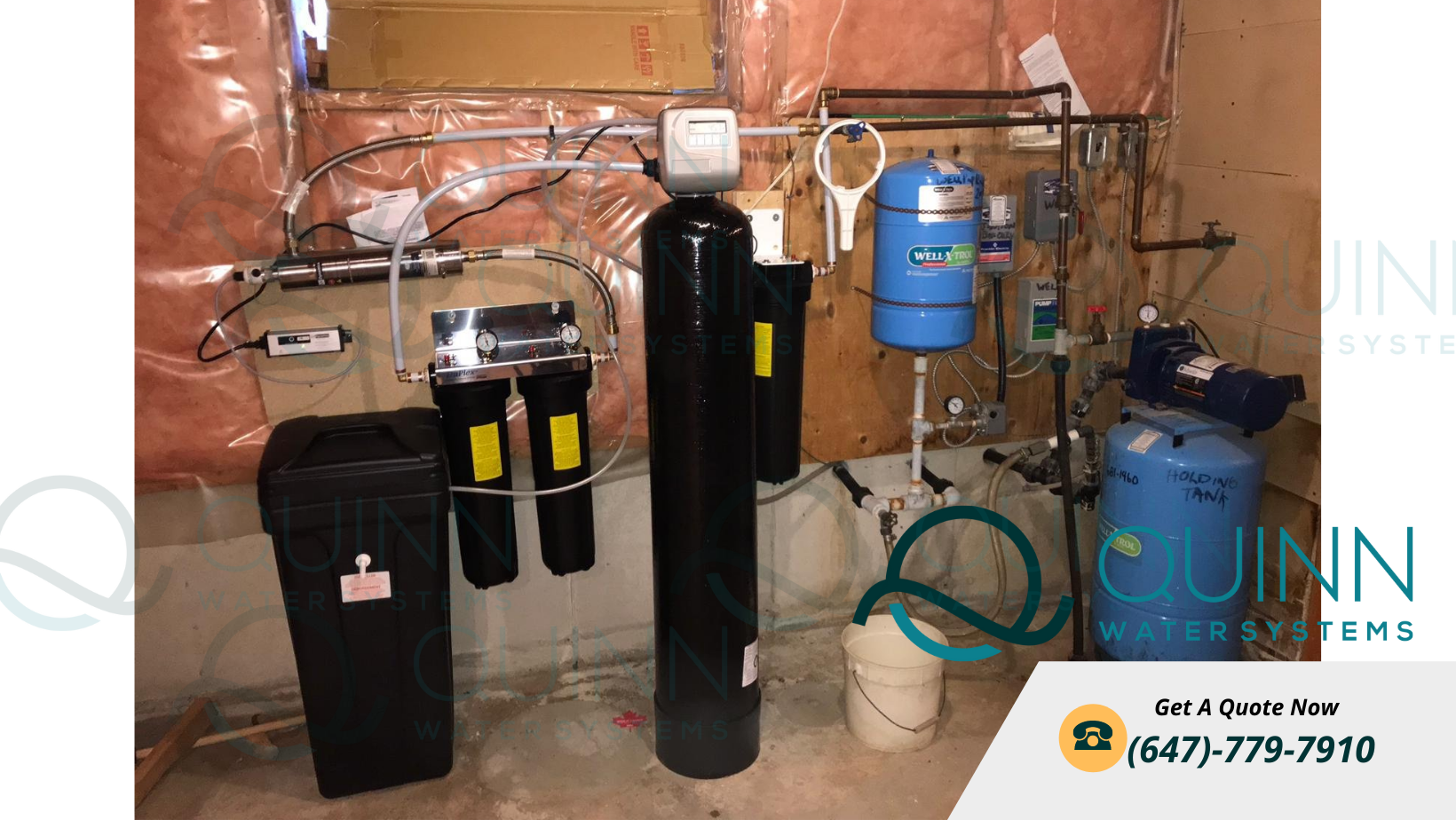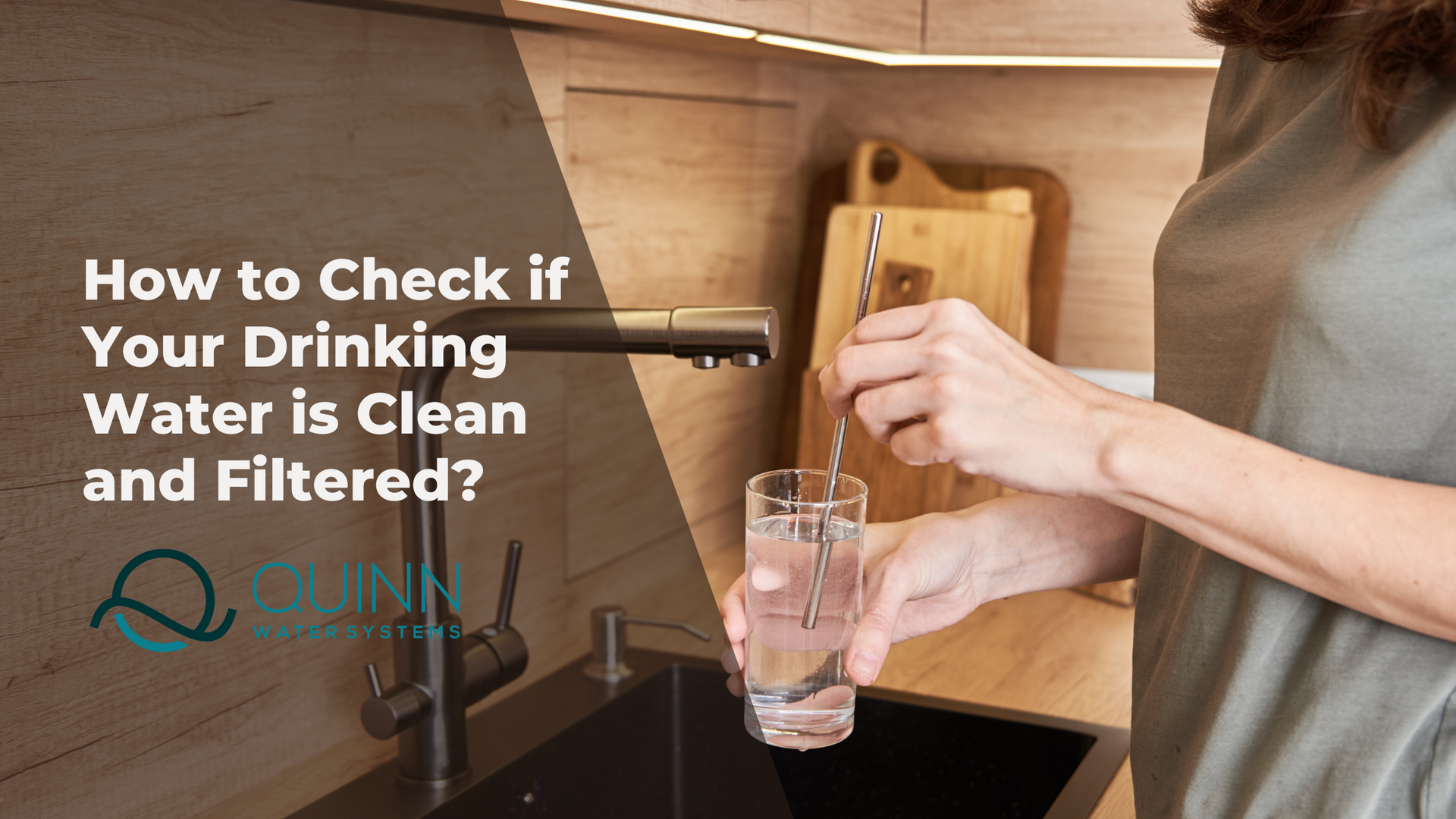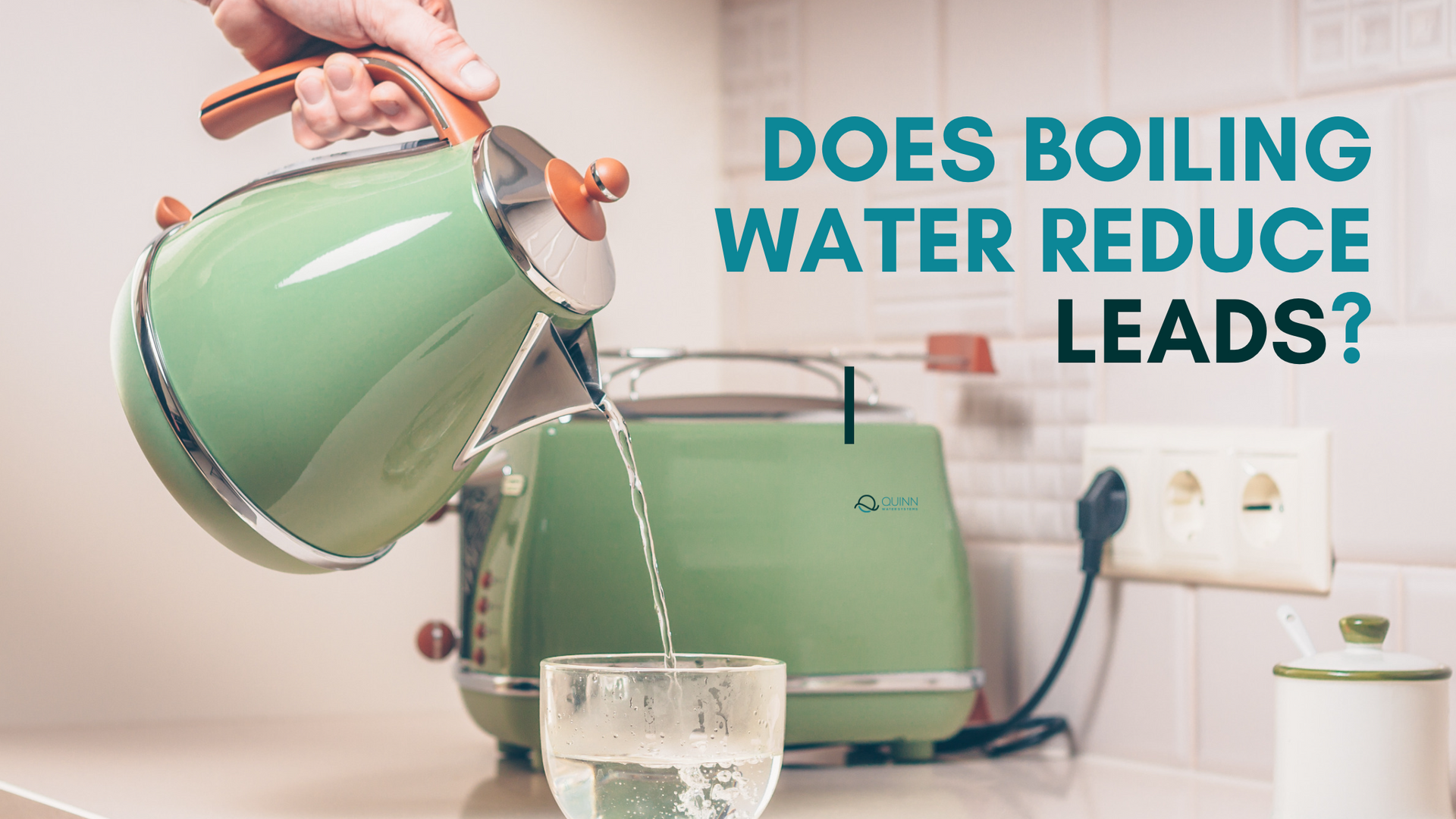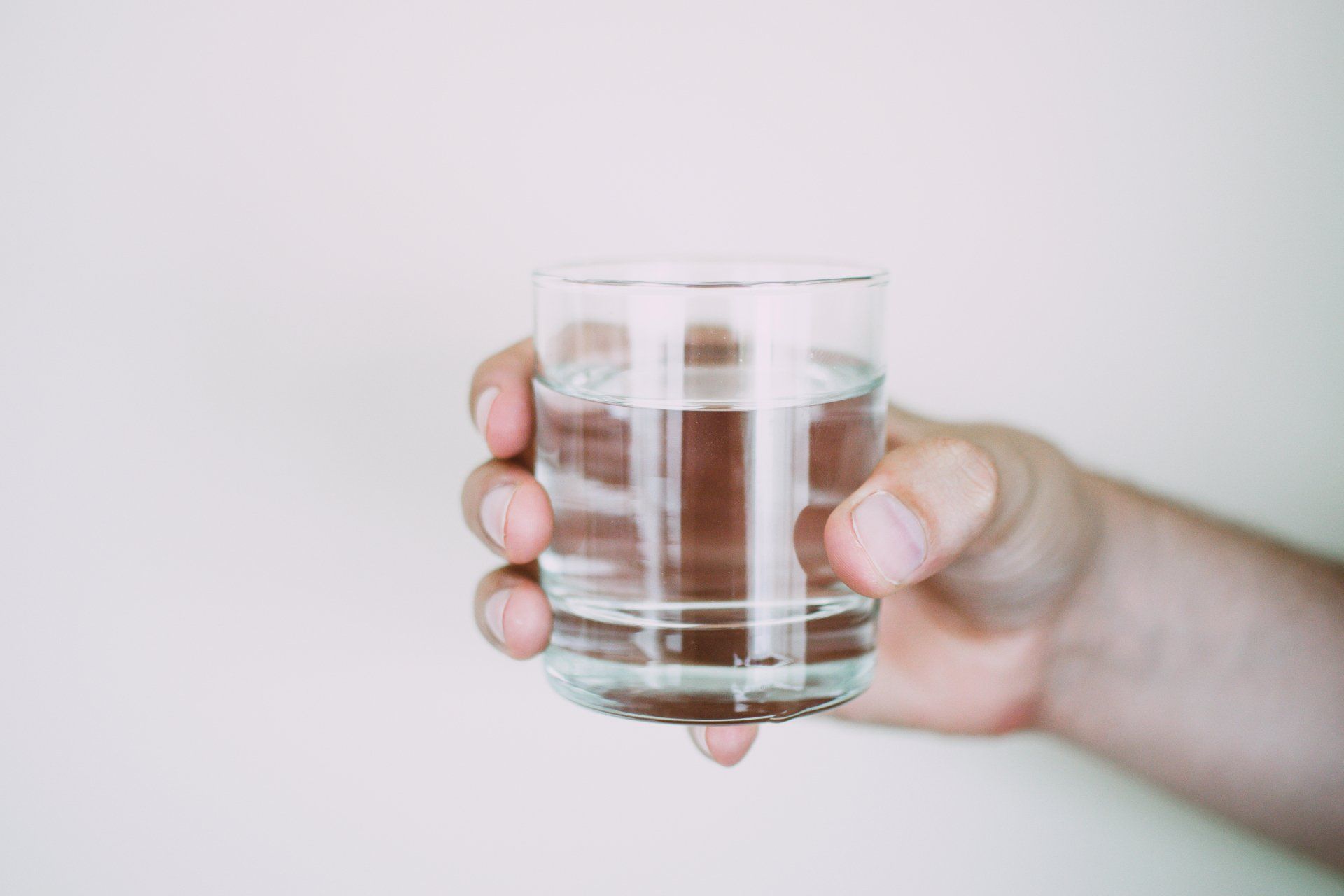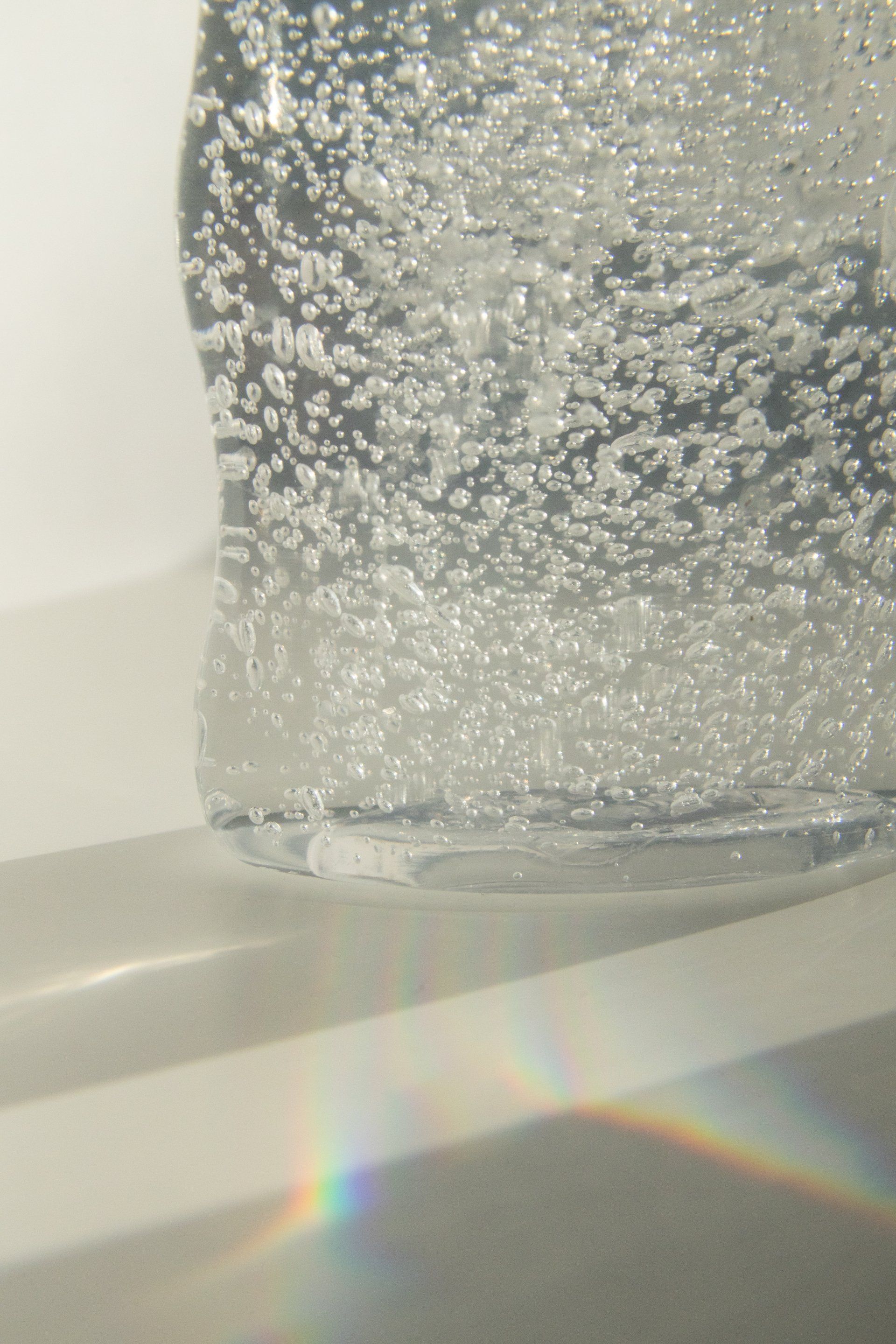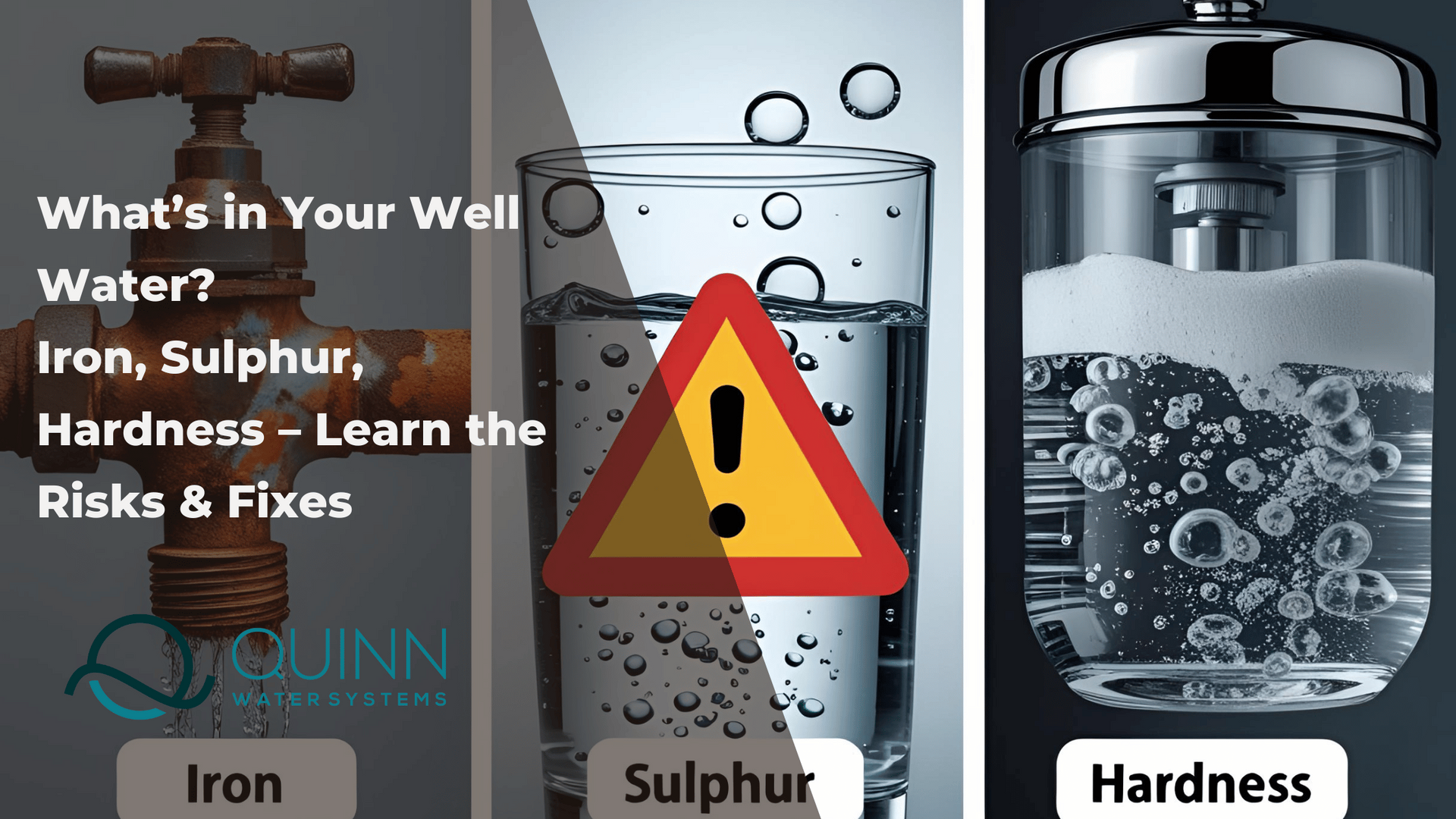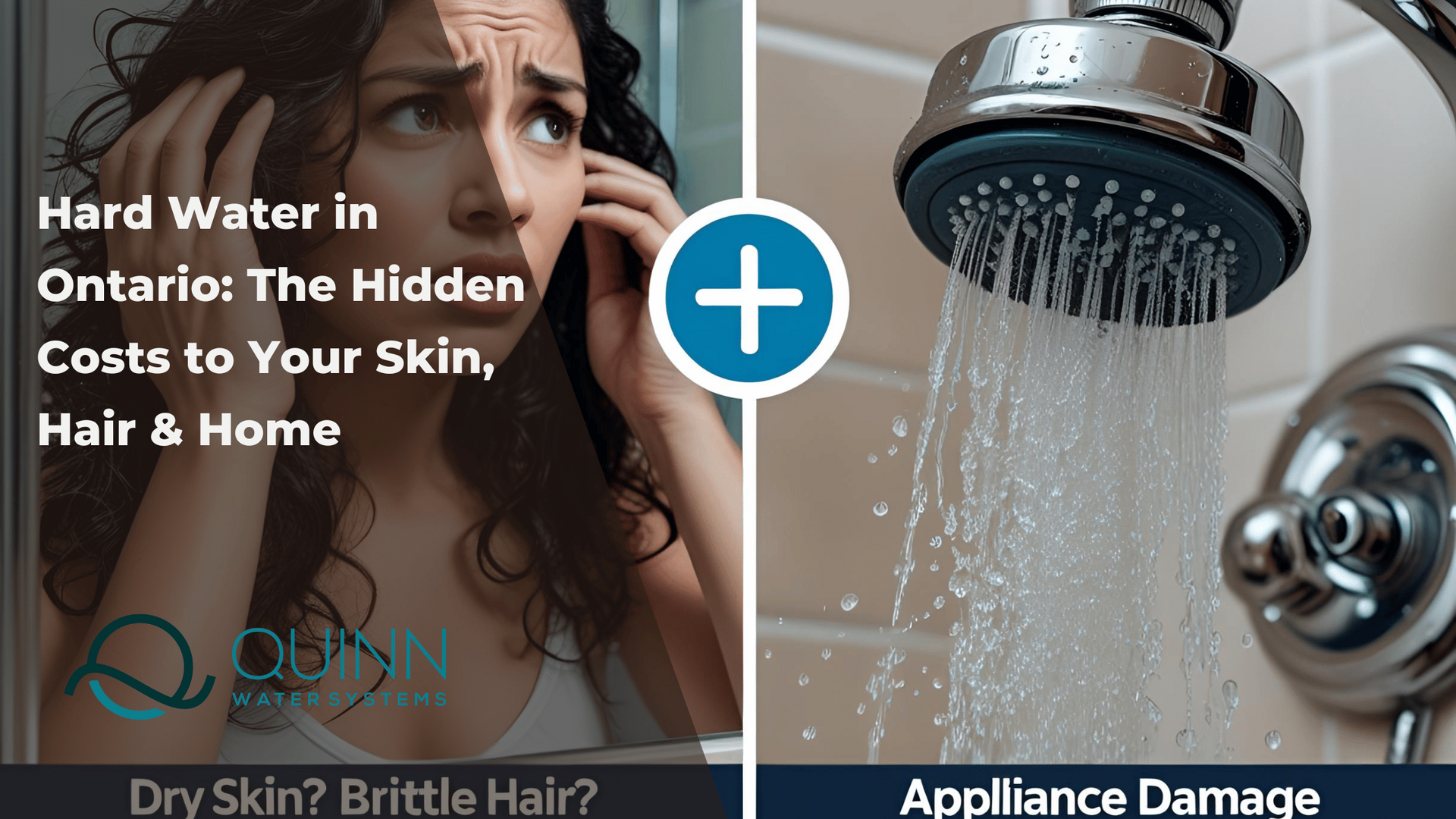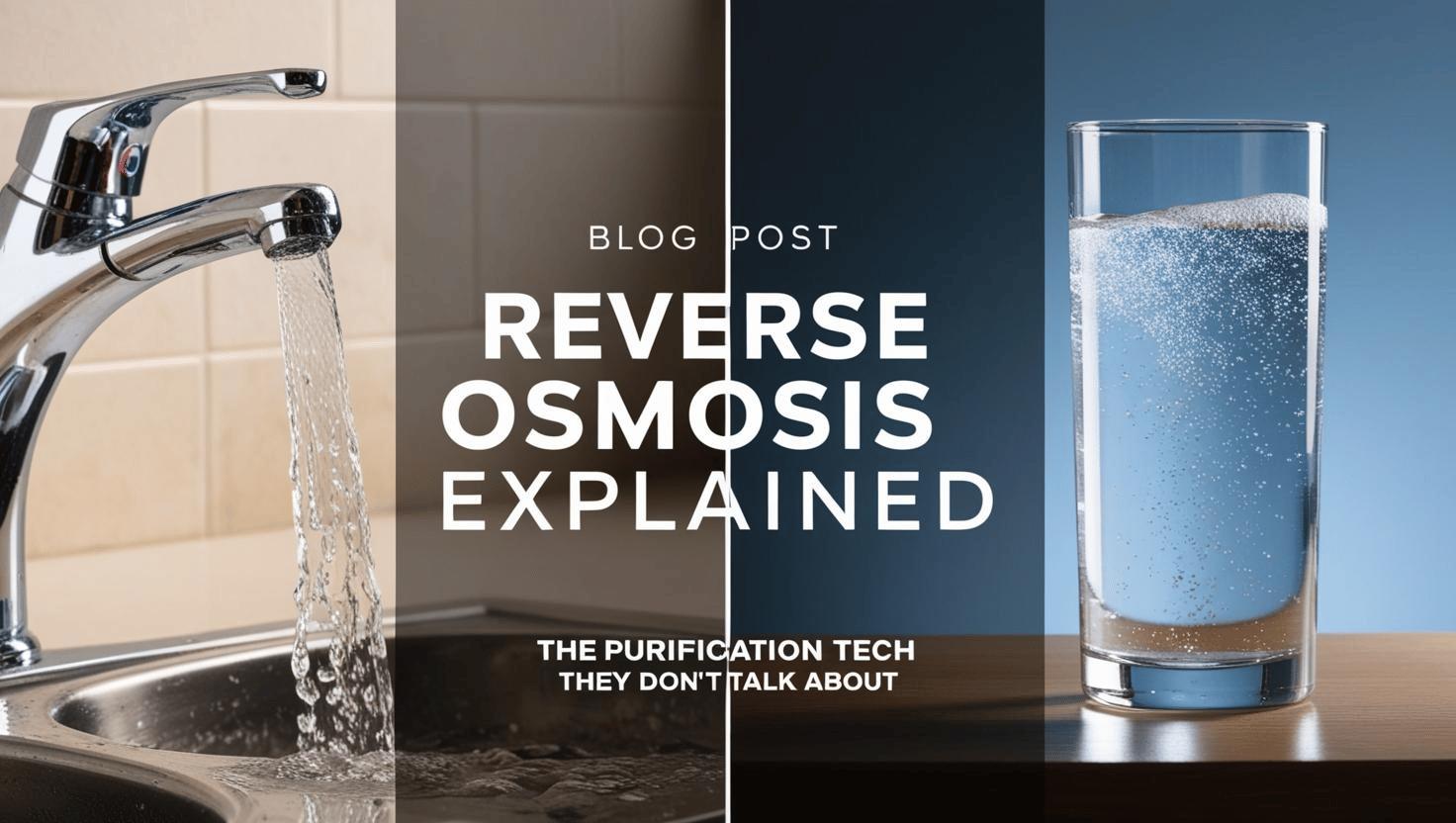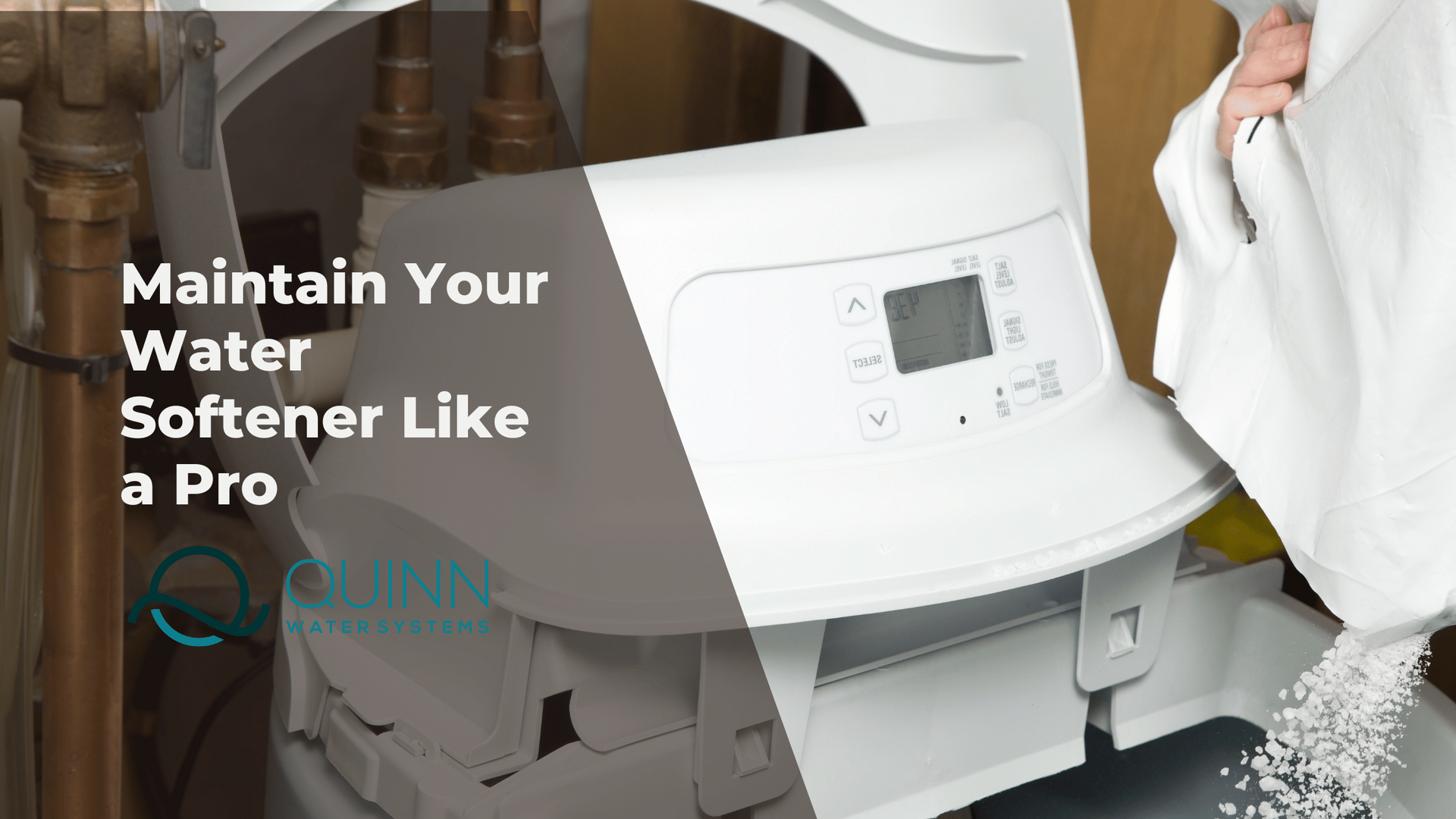How To Remove E.coli and Coliform from Well Water Ontario
Well water is a significant resource for homeowners in Ontario, but its quality can vary by locations. Contaminants like E.coli and Coliform bacteria can pose serious health risks and make well water unsafe. This blog post focuses on protecting your well water from these contaminants. We'll also spotlight how Quinn Water Systems can help. Stay tuned to learn about the importance of testing and expert solutions for clean and safe private well water experience.
>> Pros and Cons of Well Water vs City Water
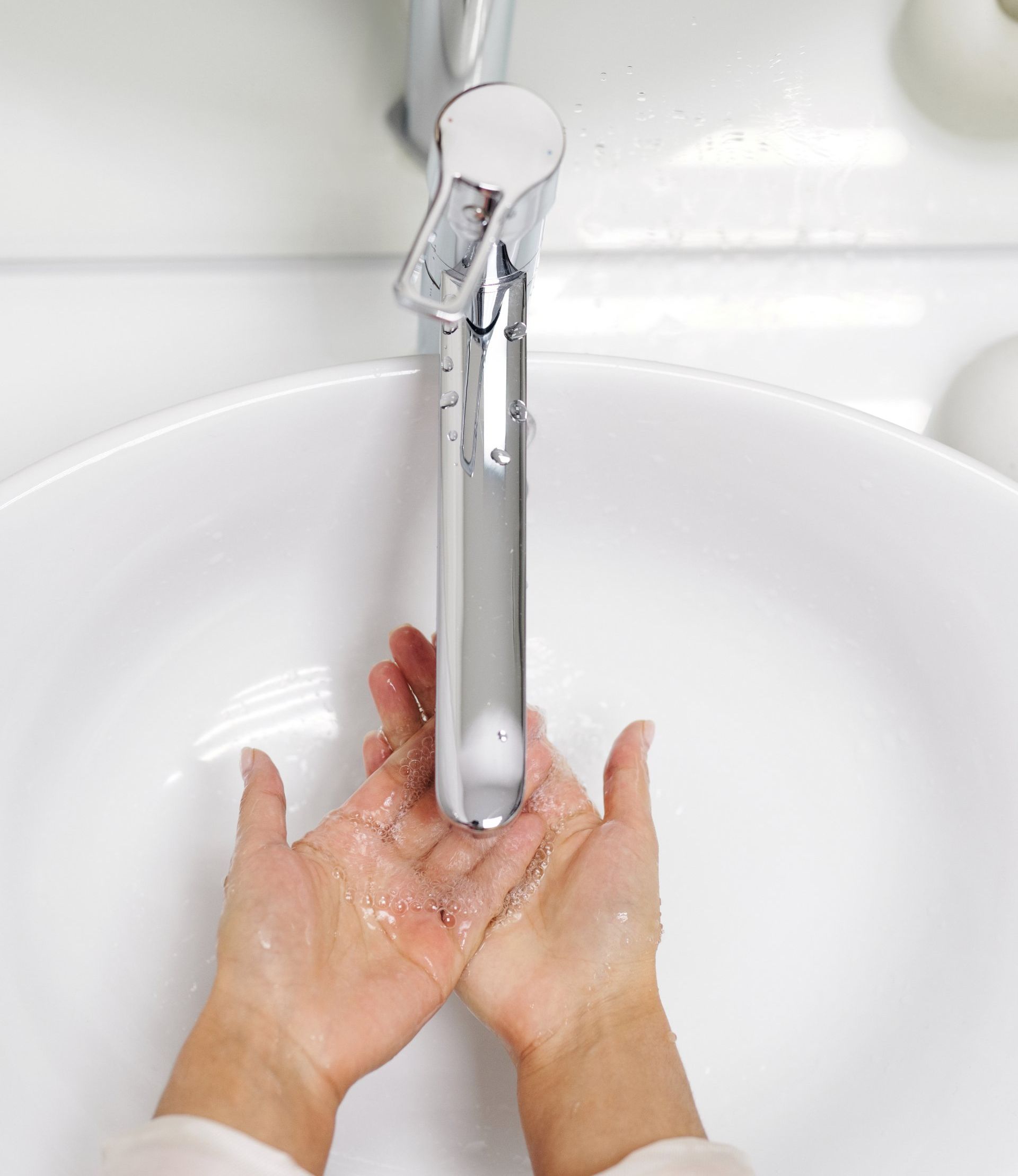
Understanding Well Water Quality in Ontario
The fluctuating nature of well water quality
Well water quality in Ontario is anything but static. It can change due to various factors like weather, environmental conditions, and nearby land use. These fluctuations can potentially introduce contaminants like E.coli and Coliform bacteria into your water source. Being aware of this variability is the first step towards maintaining clean and safe well water.
Local water testing as a preventive measure
To stay ahead of any water quality issues, local water testing is your best friend. Regular testing by professionals can uncover any potential contamination, helping you take timely action. The testing process analyzes key indicators, ensuring that your water meets safety standards. By identifying issues early, you can safeguard your family's health and prevent any unwanted surprises.
Emphasis on frequent testing for comprehensive well water monitoring
Frequent testing isn't just recommended; it's crucial. The shifting nature of well water quality demands consistent monitoring. Regular tests provide a comprehensive view of your well water's condition over time. This helps you spot patterns, identify any emerging concerns, and make informed decisions to maintain the water's purity. Working with water experts like Quinn Water Systems, you can establish a testing routine that ensures the ongoing health of your well water.
By understanding the dynamic nature of well water quality, prioritizing local water testing, and maintaining a schedule of frequent testing, you're taking significant steps towards a continuous supply of clean and safe well water for your Ontario home.
The Role of Indicator Bacteria
Explanation of indicator bacteria and their significance
Indicator bacteria serve as alarm bells for potential water contamination. They act as early indicators of the presence of harmful microorganisms that might be present in the water. These microorganisms are not directly tested for but can suggest a compromised water source.
In this context, Total Coliform and E. coli are two essential indicator bacteria. Total Coliform are a group of bacteria commonly found in soil, vegetation, and even animal waste. Their presence can signal that the well water might be influenced by surface water, possibly due to inadequate well casing or nearby pollution sources.
E. coli, on the other hand, is a specific bacterium usually found in the digestive systems of animals and humans. Its presence in well water indicates that the water has been contaminated with fecal matter, which poses significant health risks. Consuming water with E. coli is dangerous and requires immediate attention.
Understanding these indicator bacteria is vital for well water owners. Regular testing for Total Coliform and E. coli provides essential information about the overall health of your well water. Detecting their presence early can prompt timely actions to address potential contamination. In the next section, we'll delve into the steps you should take if indicator bacteria are found in your well water and explore how Quinn Water Systems can be your partner in resolving these concerns.While they might not directly cause illnesses, their existence implies that harmful microorganisms could be present in the water. These indicators help guide necessary actions to maintain water quality and ensure the safety of consumers.
Identifying potential sources of contamination based on indicator bacteria presence
The presence of Total Coliforms and E. coli in well water serves as clues to potential contamination sources. This presence often indicates that surface water might be infiltrating the well, carrying with it contaminants like animal waste or pollutants. This insight helps pinpoint areas of concern and directs efforts towards rectifying them.
Total Coliforms and E. coli: What You Need to Know
Total Coliforms: Origins and potential implications
Total Coliforms are diverse bacteria commonly found in nature. They inhabit soil, plants, and even intestines of animals. When they're detected in well water, it could indicate that the well's protective layers are compromised, allowing contaminants to seep in. While not all Total Coliforms are harmful, their presence alerts us to potential issues.
E. coli (Escherichia coli): Association with human and animal waste
E. coli, a specific type of Coliform bacteria, is usually found in the intestines of warm-blooded animals, including humans. Its presence in well water signifies a direct connection to fecal contamination. This bacterium is an unmistakable indicator of unsafe water quality.
Significance of E. coli presence - indicating potential contamination
When E. coli is detected in well water, it's a clear signal that the water is compromised. Consuming water with E. coli can lead to severe gastrointestinal illnesses and other health problems. It's a critical concern that necessitates immediate action.
Drinking water safety concerns related to these bacteria
Both Total Coliforms and E. coli serve as vital indicators of well water safety. Their presence signals potential contamination, which could pose health risks. Ensuring the absence of these bacteria is fundamental to guaranteeing safe drinking water for you and your family.
In the following section, we'll delve into what steps to take if you find Total Coliforms or E. coli in your well water and explore how Quinn Water Systems can offer effective solutions to address these challenges
Immediate actions upon detecting contamination
If Total Coliform or E. coli are detected in your well water, swift action is crucial. These indicators suggest a compromised water source. First, halt all water usage for drinking, cooking, and even bathing until the issue is resolved.
Ceasing water usage, boiling water, or using alternative sources
To ensure safety, avoid using the contaminated well water. You can either boil it for at least one minute or use bottled water for your daily needs. If a municipal water supply is available, that's a viable alternative as well.
Seeking advice from local public health authorities
Reach out to your local public health unit immediately if you discover contamination. They can provide professional guidance on the necessary steps to take and how to address the issue effectively.
>> What to do if your well is contaminated with bacteria
Importance of professional assistance and corrective measures
Contamination issues require specialized attention. Engaging licensed professionals, such as well water contractors, is essential. They can identify the source of contamination and recommend corrective actions to rectify the situation.
Steps to Improve Well Water Quality
Resampling after corrective actions
After addressing the contamination issue, it's vital to resample your well water to ensure it's safe for consumption. Regular testing is key to confirming that the corrective measures have been successful.
>>The ultimate guide to well water testing
Involvement of licensed well contractors for inspections
Licensed well contractors possess the expertise to evaluate and maintain your well system. Regular inspections by these professionals can catch potential issues early and ensure the ongoing safety of your water source.
Exploring well water treatment options
In cases of persistent contamination, it might be necessary to consider water treatment for well options. Water treatment professionals can provide guidance on suitable solutions to ensure continuous access to clean and safe well water.
What if my well water got positive result for E.coli but no presence of Coliform?
If a biofilm has developed within your well or plumbing system, you can address this issue by disinfecting both your well and plumbing system.
- In the event that surface water is infiltrating your well, it's crucial to identify the source of this ingress and take steps to prevent it. You may require the assistance of a specialist in well maintenance.
- If your well draws water from an aquifer containing bacteria, a common occurrence with shallow groundwater sources, you have two potential solutions:
- Consider drilling a deeper well, as this may resolve the problem. Ensure compliance with the separation distances indicated in Well Water Guide and properly decommission your old well.
- Alternatively, you can opt to install a treatment system to address the bacterial contamination issue.
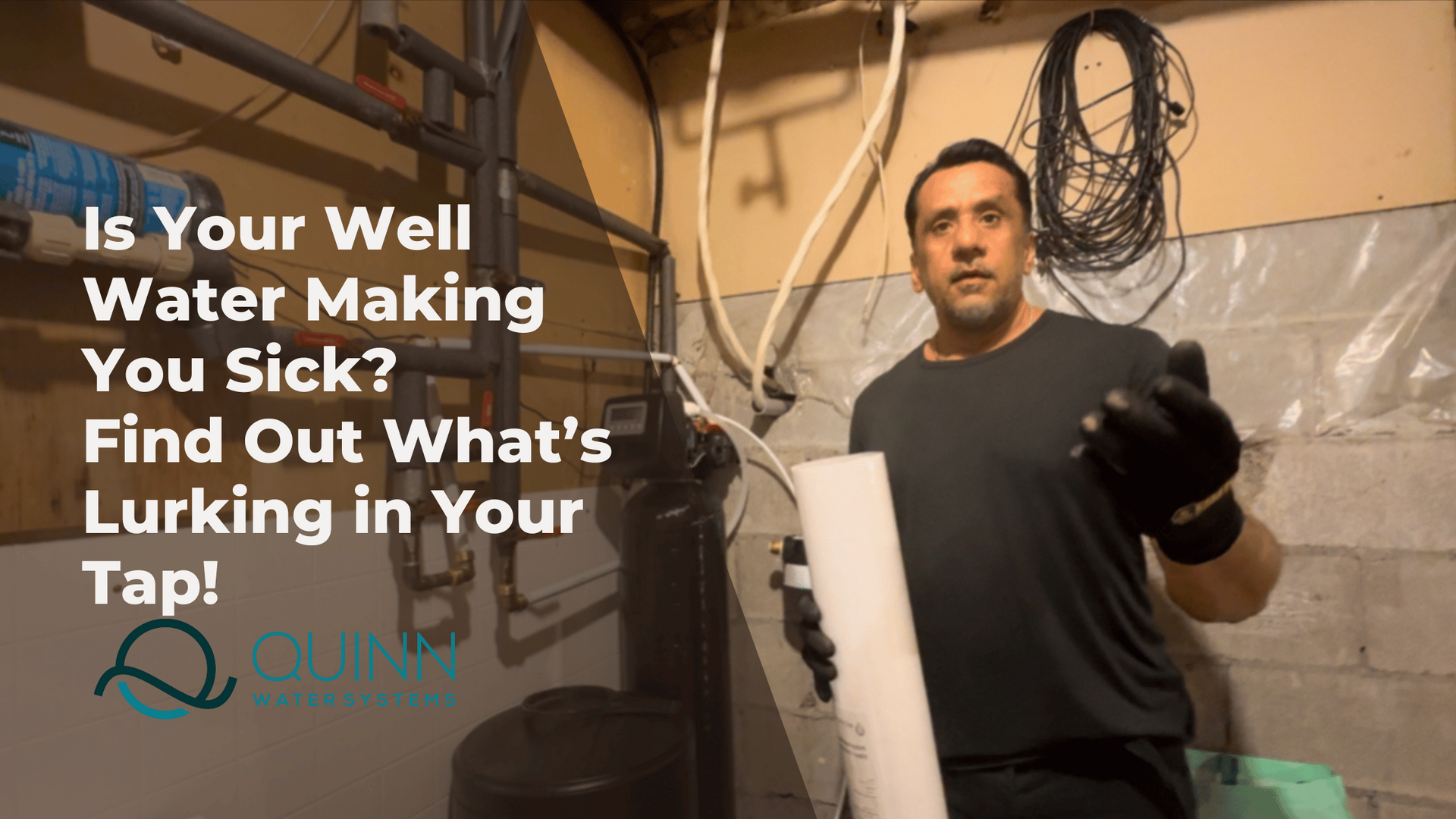
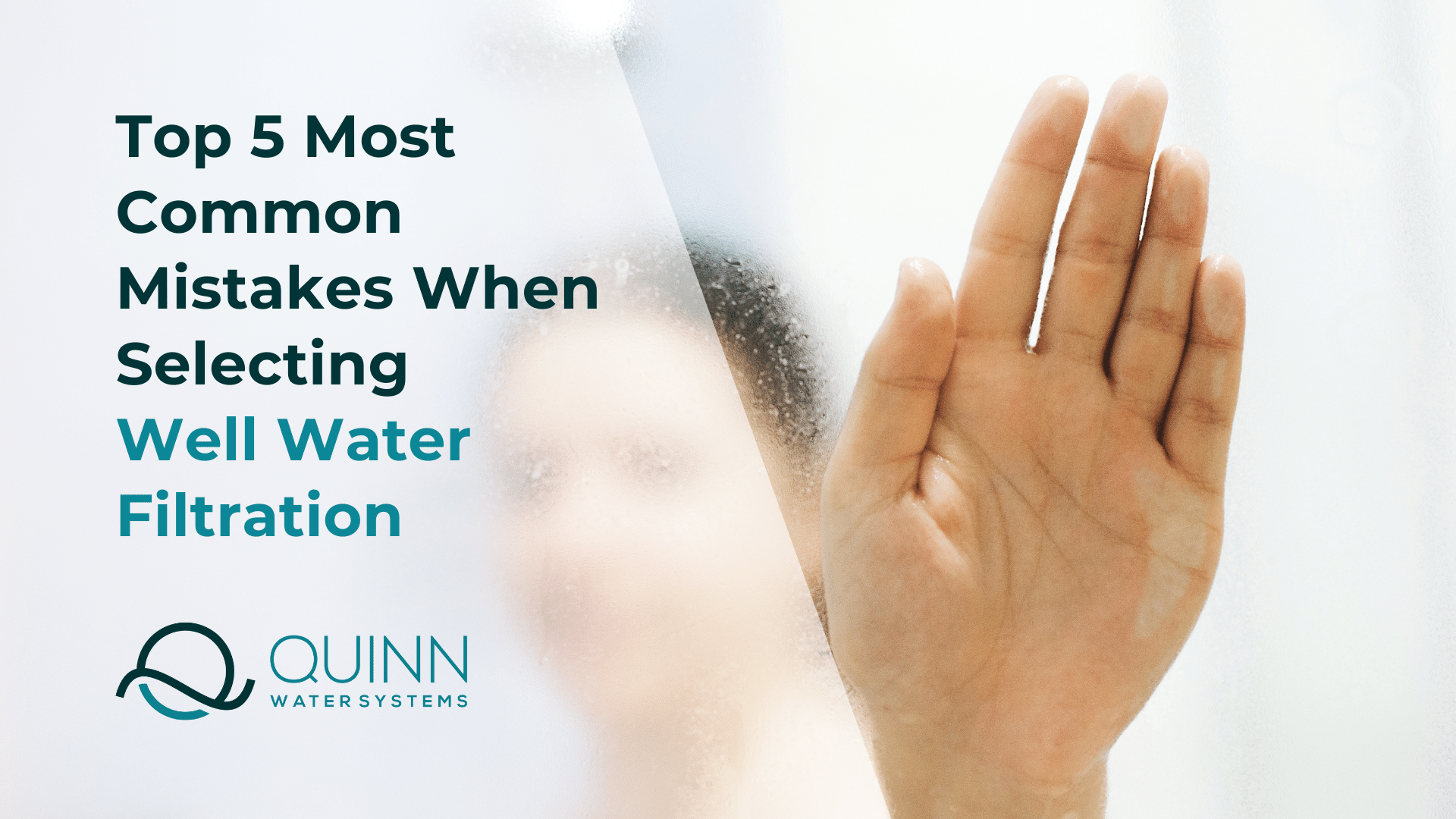
Installing Well Water Treatment Systems
The role of treatment systems in bacterial removal
Well Water Treatment systems play a crucial role in eliminating bacteria from well water. They're designed to target and remove contaminants effectively, ensuring the safety of your water.
Consulting with water treatment professionals for suitable options!
How Quinn Water Systems can provide tailored well water treatment solutions
Quinn Water Systems specializes in well water treatment solutions. With our expertise, our water technician can offer customized treatment options that align with your well water quality challenges, ensuring you have access to safe and pure drinking water.
In the final segment, we'll wrap up our exploration and emphasize the significance of working with experts like Quinn Water Systems for reliable well water solutions. If you're seeking a reliable method to disinfect well water, consider ultraviolet water purification (UV). This approach is highly effective in eliminating bacteria from water sources. UV water purifiers are commonly utilized to treat municipal water, as well as water from rivers or lakes with relatively low Total Dissolved Solids (TDS) levels.
Here's how it works:
UV rays penetrate the impure water during the purification process, targeting and neutralizing microorganisms like bacteria and viruses. This process ensures that the water you receive and safe for consumption.
Maintaining the quality of your well water involves regular testing, responsible maintenance, and proactive involvement of licensed well contractors. Quinn Water Systems can be your reliable partner in this journey. Our expertise in well water treatment in Ontario and tailored solutions can help you tackle contamination challenges and ensure the ongoing safety of your well water.
Blog Posts
Share this blog
Blog Posts





